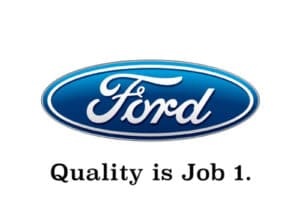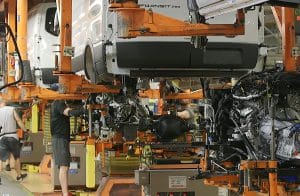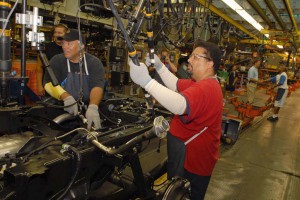
Ford’s new CEO Jim Farley has plenty of challenges facing him in the coming year, and many of them can be traced back to the automaker’s ongoing quality and reliability issues that are hurting both its reputation and its bottom line.
The depth of the problem was highlighted last week when Consumer Reports released its annual Auto Reliability Study revealing that the mainstream Ford brand ranked 22nd out of 26 brands, the high-line Lincoln brand coming in dead last. But that only underscored the fact that Ford spent $2 billion more than archrival General Motors on warranty repairs during the first nine months of this year, according to their individual financial reports.
That’s leading Farley, who officially became chief executive on Oct. 1, to launch a crackdown that not only aims at fixing internal problems but also takes aim at suppliers that provide faulty parts. The effort, in effect, aims to revive the automaker’s claim that “Quality is Job One.” Though dreamed up as an ad slogan used through the 1980s and 1990s, it came at a time when Ford’s quality was the best of the Detroit Big Three and was catching up to some of its key Japanese rivals.
(Mazda tops annual Consumer Reports reliability study, Lincoln last.)
One key part of Farley’s plan will see suppliers charged up front for half the cost of a warranty problem linked to parts they’ve provided. They could get a rebate, however, if they move quickly to resolve a problem.

“What we are striving for is to fix the issues as fast as possible so that those adjustments are as small as possible,” Kumar Galhotra, president of the automaker’s Americas and International Markets group, said in an interview with Reuters. “They’re more incentivized to work with us.”
This isn’t the first time manufacturers have demanded that suppliers share in the cost of warranties and recalls. But Ford is betting that an all-out push will lead parts vendors to put a higher priority on controlling quality before there is an issue, rather than resolving issues after vehicles have already been shipped to consumers.
Ford has faced an array of issues lately, ranging from faulty transmissions to kludgy infotainment systems. One senior supplier official who spoke to TheDetroitBureau.com on background said he is concerned by what he saw as “Ford trying to shift the blame.” He claimed that many of the automaker’s problems were of its own making, including faulty production processes along the assembly line, software glitches with the Sync infotainment technology, and bad designs for components such as Ford’s own transmissions.
But the executive also acknowledged that suppliers “clearly” contribute to the problems Ford faces.
Whatever the root cause, Ford spent $3.87 billion on warranty repairs during the first nine months of this year compared to $1.68 billion at General Motors, according to filings with the U.S. government. Warranty costs that ran about 2% of Ford’s sales in 2012 and 2013 blew up to 4.3% during the second quarter of this year.

(Ford looks to gain commercial EV leadership spot with 2022 E-Transit van.)
The latest figure is a bit misleading as overall industry sales tumbled sharply between April and June due to the coronavirus pandemic, but the upward trend was already apparent well before the two-month shutdown of North American automotive manufacturing began in March.
And Ford’s problems with quality have become increasingly apparent during the last several years. The launches of the all-new Lincoln Aviator and a completely made-over Ford Escape were marked by serious issues that delayed the production ramp up – and which brought to light problems at the company’s Chicago Assembly Plant as much as any issues with defective parts.
“It can be fixed,” Warranty Week editor Eric Arnum told Reuters. “They just have to make the effort.”
Just how hard Ford can lean on its suppliers for their role in its quality problems is unclear, however. Like its competitors, the second-largest U.S. automaker has hammered parts manufacturers for price cuts in recent years, trimming margins to record lows, according to sources like OESA, a motor parts manufacturing trade group,
Further complicating matters, suppliers have been hit hard by the coronavirus pandemic themselves. Not only are they facing tight margins but they’ve also been hit by this year’s sharp downturn in new vehicle sales. Add to that the cost and logistical challenges of implementing processes aimed at preventing new COVID-19 infections on the shop floor.

Disruptions linked to the pandemic have caused parts shortages on a number of occasions that have, in turn, disrupted assembly lines. Such disruptions can lead to quality issues.
But Farley doesn’t seem willing to cut suppliers slack, at least when it comes to shipping bad parts. During an Oct. 28 earnings call, he said Ford will be “punitive” with suppliers who miss quality goals, adding that “We’re targeting a fully competitive level of warranty spend on coverages and that’s got lots of zeroes next to it.”
(Ford turns $2.4 billion net profit for Q3 2020.)
How well Farley’s quality campaign plays out will be directly measured on the bottom line. And, considering the poor reception Ford has gotten from investors in recent years, it could determine whether they will warm to Ford stock under the company’s new leadership.








I have a 2018 f150 from Bill Knight ford in Tulsa Oklahoma they told me at 1500 miles that it was normal to use 3/4 of a quart of oil A bold face lie they yet to fix uses 1 1/2 quarts ever 5000 miles bullshit it’s junk and would like for someone to pay
1 Comment
Robbie Nichols
Robbie Nichols on at
I have a 2018 f150 from Bill Knight ford in Tulsa Oklahoma they told me at 1500 miles that it was normal to use 3/4 of a quart of oil A bold face lie they yet to fix uses 1 1/2 quarts ever 5000 miles bullshit it’s junk and would like for someone to pay
I have a new 2020 Ford Edge. Bought it on May 13, 2021 from Osseo Ford in Osseo, Wisconsin. It has a leak in the transmission and when I called them about it they played dumb but said they would look at it. I took it to Hudson Ford in Hudson, Wisconsin to be fixed and they told me it had been taken apart before but not fixed correctly. They ordered parts but are still waiting for them. My brand new Ford Edge has been sitting at their dealership since July 21st, 2021. They kindly gave me a loaner but I’d like my New car. Where are the parts being held up?? This is my 4th new Ford in a row now 12 years. What has happened to job one. I’d like my new Ford edge please.
Jay, I’m a bit surprised by the delay. There should be a contact number for the factory rep in your owner’s manual. (The loaner should have one, as well.) If you can’t get a straight answer from the dealer contact Ford.
If you hit a dead end and don’t have a clear date by the end of this week reach back out to me.
Paul E.
Novel idea Jim…… need to clean up ur house 1st, you have way toooo many YES men/women working under you that are afraid to stand up and do the right thing
I have 2020 Ford Edge leased on March 2021, within 4 months the pre- collison warning light started coming on. I took the car to the local Ford dealer for repairs. He told me the Cruise control module and brakes were broken and need replaced. What good is a 36, 000 – 3 year bumper- to bumper warranty for if they don’t stand behind their products? I spoken with the sales person, service manager, Ford customer service reps, FI rd customer relations personnel to no avail. This car has not been in an accident and there is no damage to the bumper or front area of the car once so ever. Some much for Quality One. Ford reps know this has happened to numerous Edge vehicles.
This was covered under warranty?